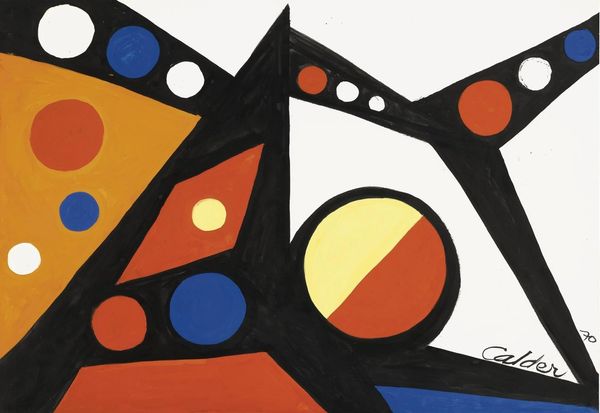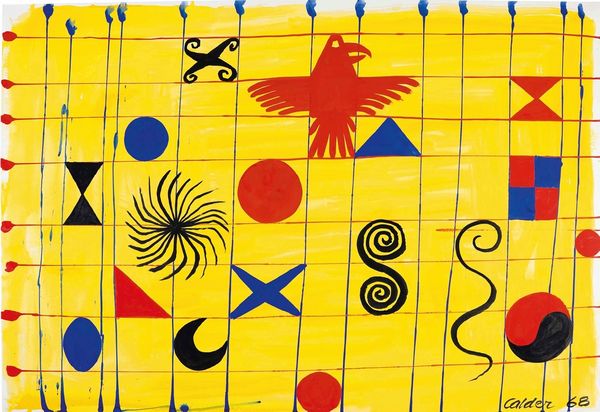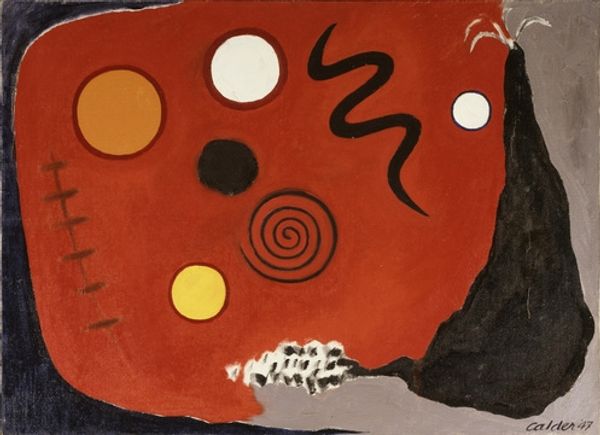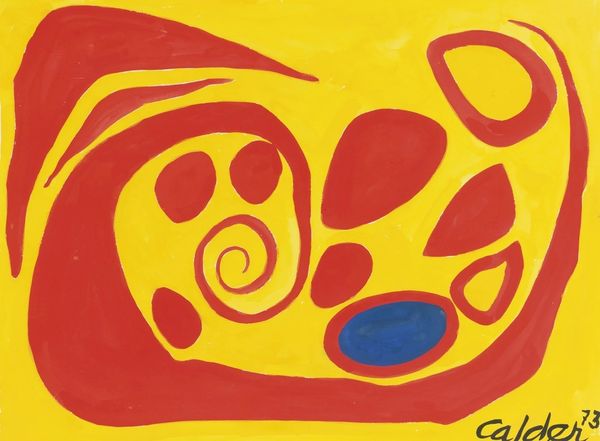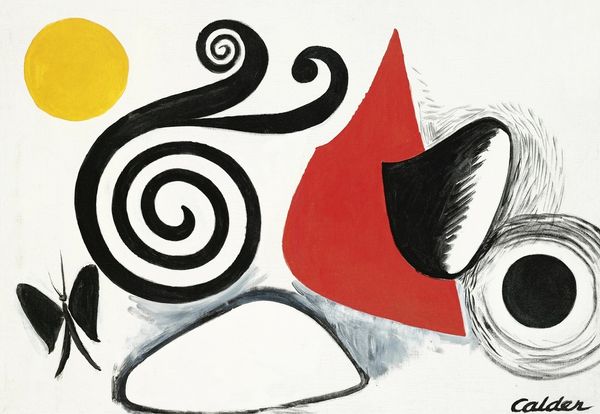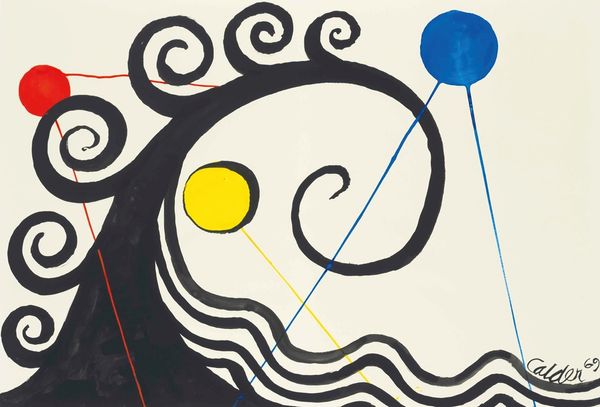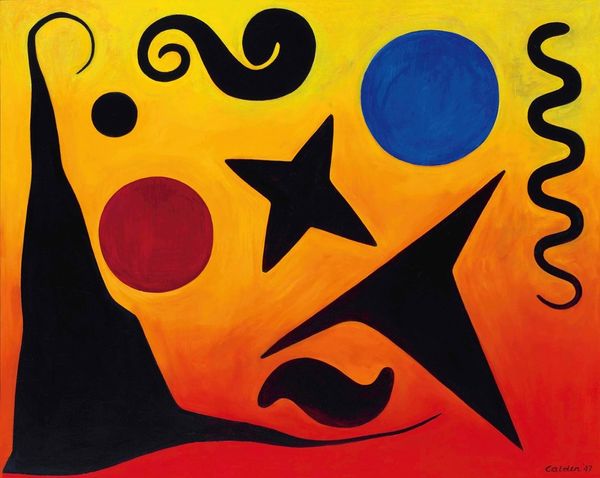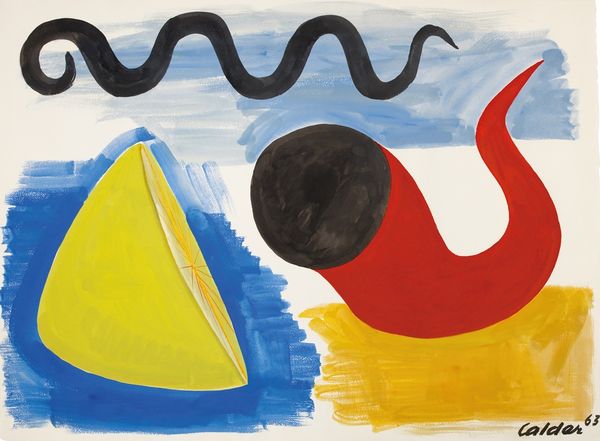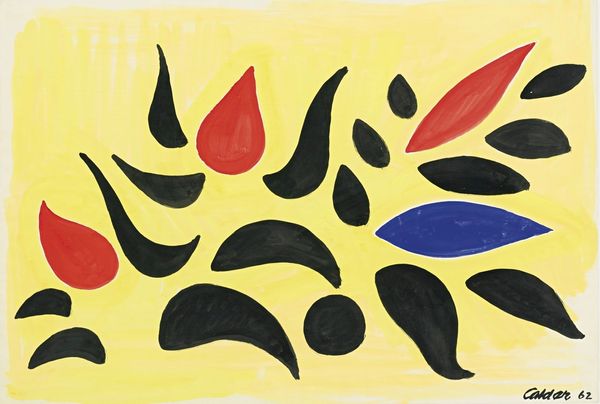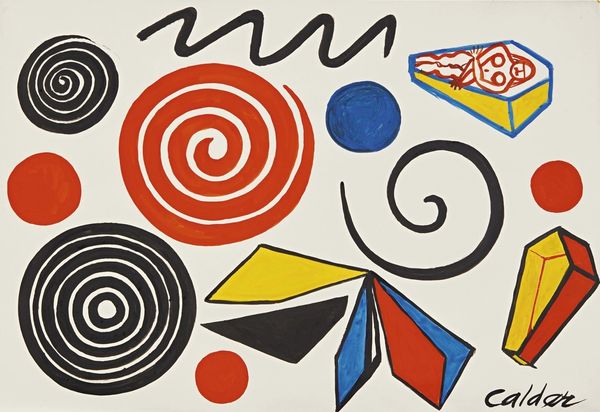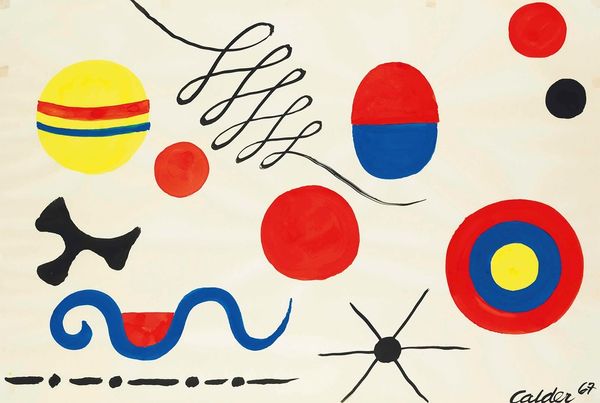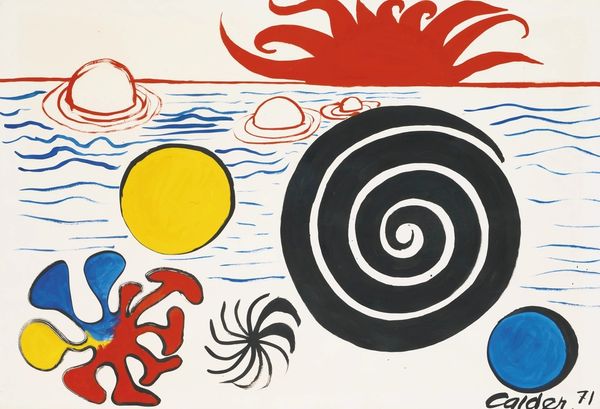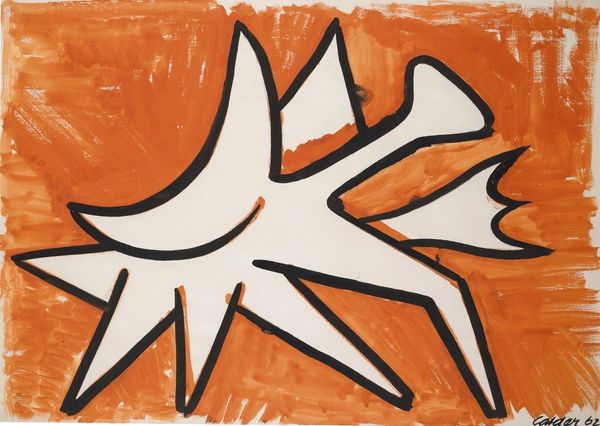
painting, acrylic-paint
#
painting
#
pop art
#
acrylic-paint
#
form
#
geometric
#
abstraction
#
pop-art
#
line
#
modernism
Copyright: Modern Artists: Artvee
Curator: Here we have Alexander Calder’s “Dots Along the Blue,” painted in 1963. The artist utilizes acrylic paint on canvas to conjure this abstract composition. Editor: Immediately I'm struck by the joyful chaos, the spirited scattering of shapes! It feels like a playful universe captured in a single frame. A world seen from space maybe? Curator: Well, Calder was quite interested in the cosmos. If we look closely, we notice a deliberate arrangement and distribution of geometric forms within specific zones of color. Considering that it’s acrylic paint, how do you interpret his material choice in rendering the canvas? Editor: Acrylic gives him such bold, flat colors. A sort of instantaneous impact, in stark contrast to the traditional laborious process of oil. You see how the colors work to create this really satisfying dynamic—the sharp yellow background against the other layered hues, the play between positive and negative space. I’m imagining the joy, the sheer FUN he must have felt, splattering paint. Curator: True. By ’63, acrylic was more commercially available. It’s quicker, cheaper, lends itself to graphic boldness... perfect for embracing this sense of playful production that counters elitist attitudes around "high art" as inaccessible and exclusive. I wonder if there’s a subtle democratizing message being coded. Editor: Oh, I like that idea of a democratizing gesture—especially the notion of play! These simplified forms evoke something primal, almost childlike in their expressiveness. That stark, unfettered approach speaks volumes, defying stuffy pretension! Curator: I think you nailed it. Perhaps we are invited to partake in Calder's game? Consider how the industrialization of art supplies in the Pop Art movement aided mass-cultural shift and expanded consumption habits, leading toward artistic practices where high and low blur... Editor: I see your point, how those bold shapes create this dynamic back-and-forth and invite movement, encouraging the viewer to seek out more than is initially apparent. But, to hell with codes and signs! Give me whimsy! Let me drown in the glorious exuberance! Curator: (chuckles) Exuberance is never a bad way to respond. It appears, we’ve unearthed our own personal connection and reaction to Calder’s dynamic abstraction. Editor: I walked away feeling like a kid. Calder, it seems, has activated our own youthful memories and our unique artistic experiences.
Comments
No comments
Be the first to comment and join the conversation on the ultimate creative platform.
